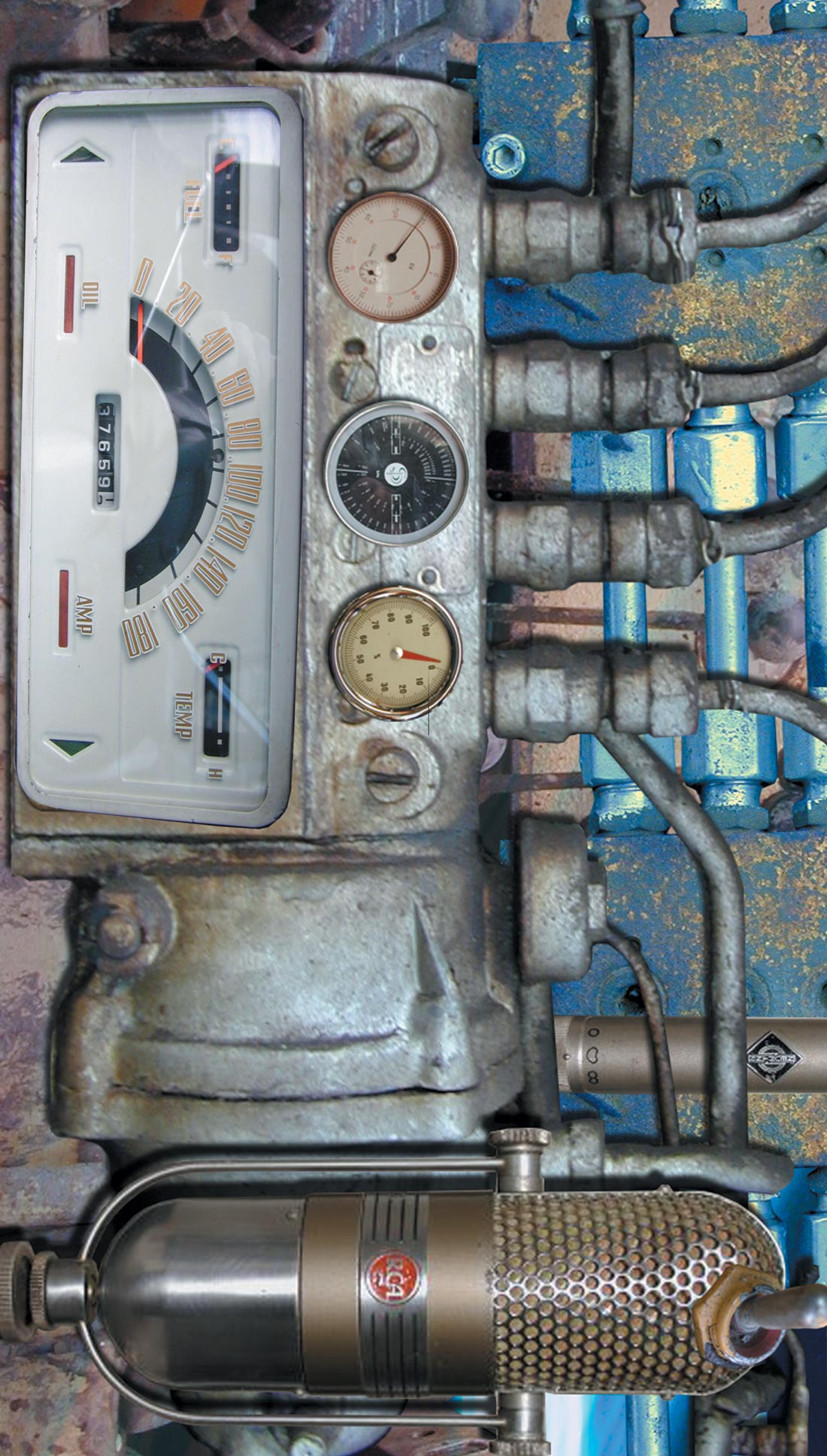The Central Station is a talkback system and studio monitoring interface that routes audio from mixing or playback devices to multiple control room speakers as well as a studio or headphone cue system. It functions as the console "master section" if you have a DAW-based system or a mixer missing master section features. Its principal design feature is that the main audio signal path contains no active electronics; volume control is purely resistive, and all switching is accomplished electromechanically using sealed relays. This inspires confidence that the sound heard in the control room is uncolored, while allowing for reliable and flexible control of the audio chain.
A total of five stereo inputs are available: three analog and two digital. Two of the analog inputs are normally sent to the two output busses of the device: Main and Cue. We used the Main buss for our control room monitors and the Cue buss to send two mono headphone mixes to the studio. The third analog input is an unbalanced Aux In with a variable gain knob controlling the output of a balancing amp. Unfortunately, with Aux In assigned to the Cue buss and the Cue buss turned up for a loud rock session, we found that with a standard CD player, this knob needed to be at the extreme low end of its range to avoid injuring the performers wearing headphones. The two digital sources must arrive via an optical and an RCA S/PDIF connection, either of which is routable from the front panel to a single 24-bit DAC. We wired the digital output of our Digi 001 to the Central Station and noticed a definite improvement to the stereo image and clarity.
Since the signal path for the main analog inputs is entirely passive, the output pots for both busses are attenuators, with 0 dB at the top of their range. The unit's face also includes trimpots for each of the three independently switchable speaker outs. These trimpots allow you to level-match between your speaker pairs. Moreover, if you decide to use one of the speaker outs for the main monitors and another out for a subwoofer, not only can you switch the sub on or off while keeping the mains on, but you can trim the sub too. The front panel has buttons to mute, dim, or set to mono the speakers, although this latter setting seemed to heavily attenuate the analog sources on our test unit. Two headphone jacks are provided, and each can be individually fed from either of the two output busses through a pushbutton switch on its volume knob; this deserves special mention. With this feature, the engineer can quickly check the Cue mix going out to the performers without affecting what's in the main monitors or in the second headphone out. Also, a performer tracking in the control room can listen on the second headphone output with easy back-and-forth switching between the cue and monitor mixes whilst between takes. It's clear that PreSonus accounted for many real-world usage scenarios in the design of the Central Station that other manufacturers have overlooked. All told, we ended up replacing three devices in our control room (a talkback controller, a digital patchbay, and a submixer we planned to use to feed our powered monitors) and achieved more functionality with the Central Station in our rack.
Our only major complaint of the system is the lack of an adjustable dim control for times when the talkback microphone is active. The default attenuation is 20 dB, which was essentially silent for the engineers and performers during real sessions. We would have liked to adjust the dim level so we could hear the performers conversing to us while we were holding down the talkback button. (Note: This has since been changed to -10dB because of user feedback. -Ed.)
The CSR-1 is an optional desktop control unit available for the Central Station. It contains input switches and a level knob for the Main buss as well as talkback and speaker selection functions. One counter-intuitive aspect of this remote is that its level control bypasses that of the front face, while its talkback gain seems to be in series with the front panel's gain. We ditched the CSR-1 control unit after about a week and hooked up our trusty Shure 550L "high school principal" microphone instead. Kudos to PreSonus for including external talkback mic and relay-switch inputs on the rear panel of the Central Station. Our Shure paging mic, with its extremely limited bandwidth, was less sensitive to room noise than the built-in mics on the Central Station and CSR-1; our talkback button was larger and more readily accessible; and we were no longer confused by the two gain controls on the main unit and the remote. On the other hand, we can understand how the CSR-1 would be indispensable in a situation where the main unit needs to be positioned in a rack that's not easily accessible. The most important controls are available on the remote, which can be placed in easy reach to the engineer's sweet spot. And only one thin serial data cable is needed between the Central Station and the remote, so it's extremely mobile and simple to wire.
Overall, the Central Station is a sturdy, well-designed monitoring device that takes a hands-off approach to the audio signal. Control and switching is smooth, with the rare exception of a button that must be pushed twice to work. It's easy to use, and in the space of a single rackspace, it manages to accomplish three essential functions that are often missing in desktop audio systems: speaker selection, source selection, and talkback. Furthermore, the Central Station has a number of unique features not found in its competition, and purists will love it for its pristine, uncolored sound. ($699.95 MSRP, CSR-1 $199; www.presonus.com)




_disp_horizontal_bw.jpg)